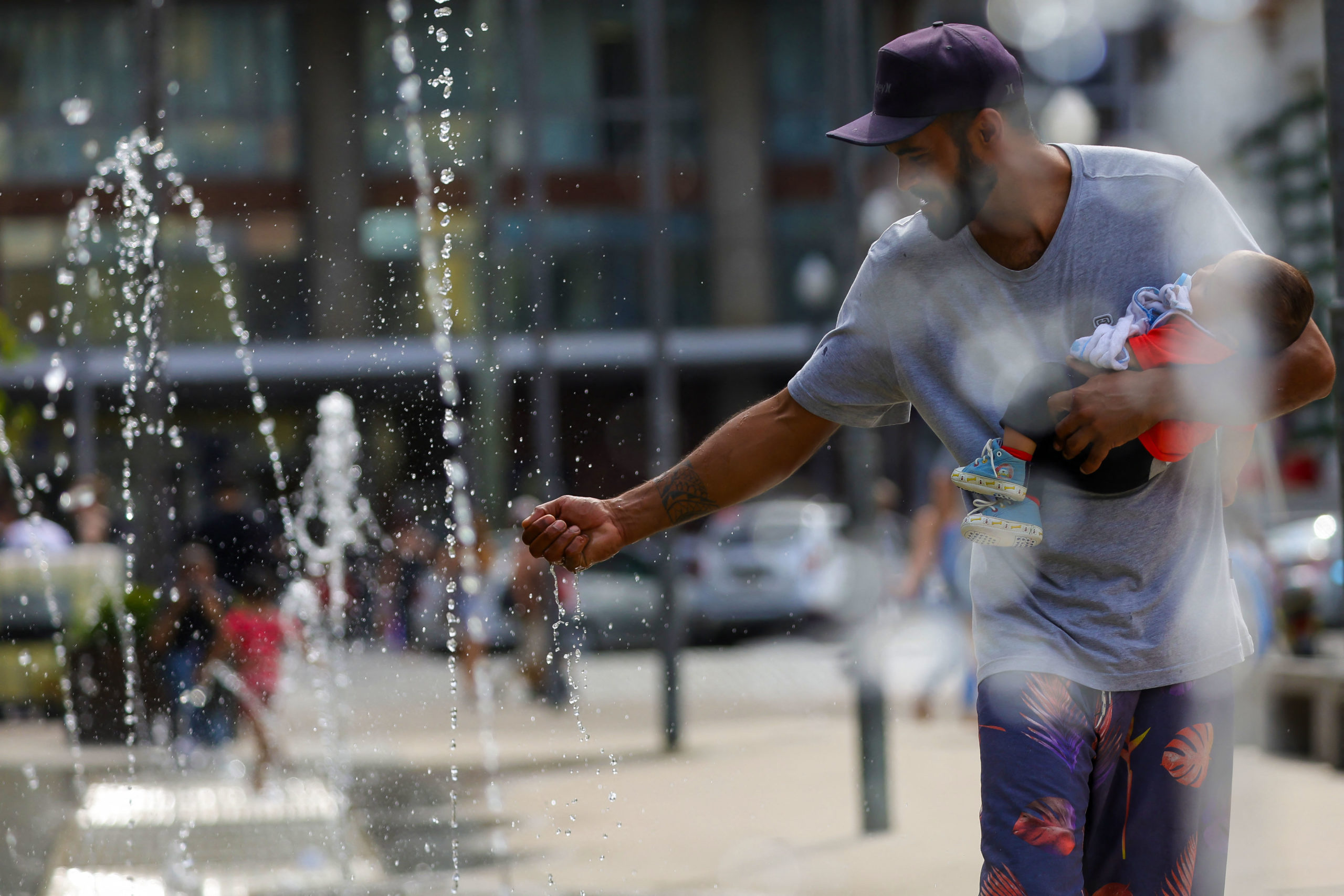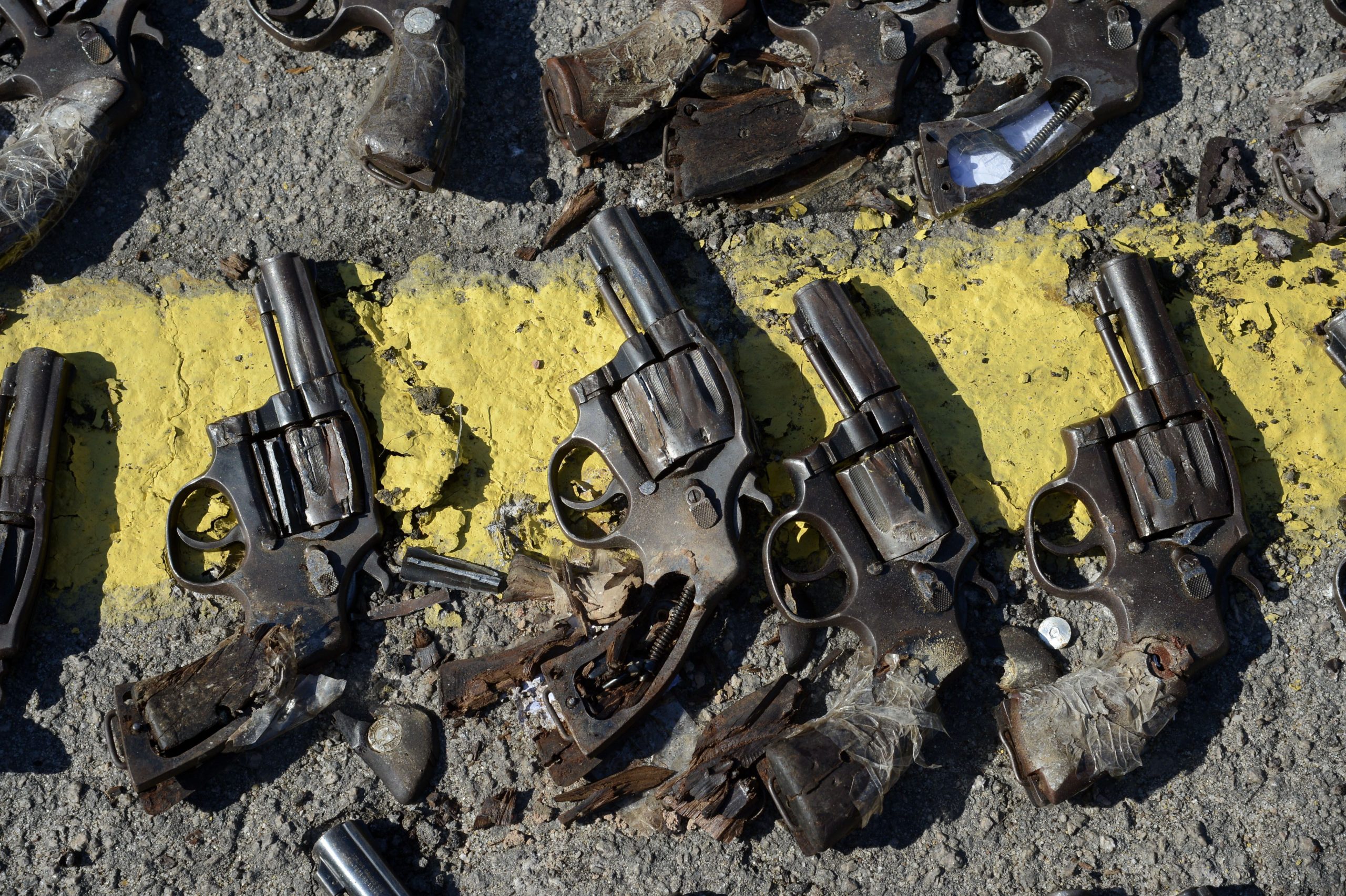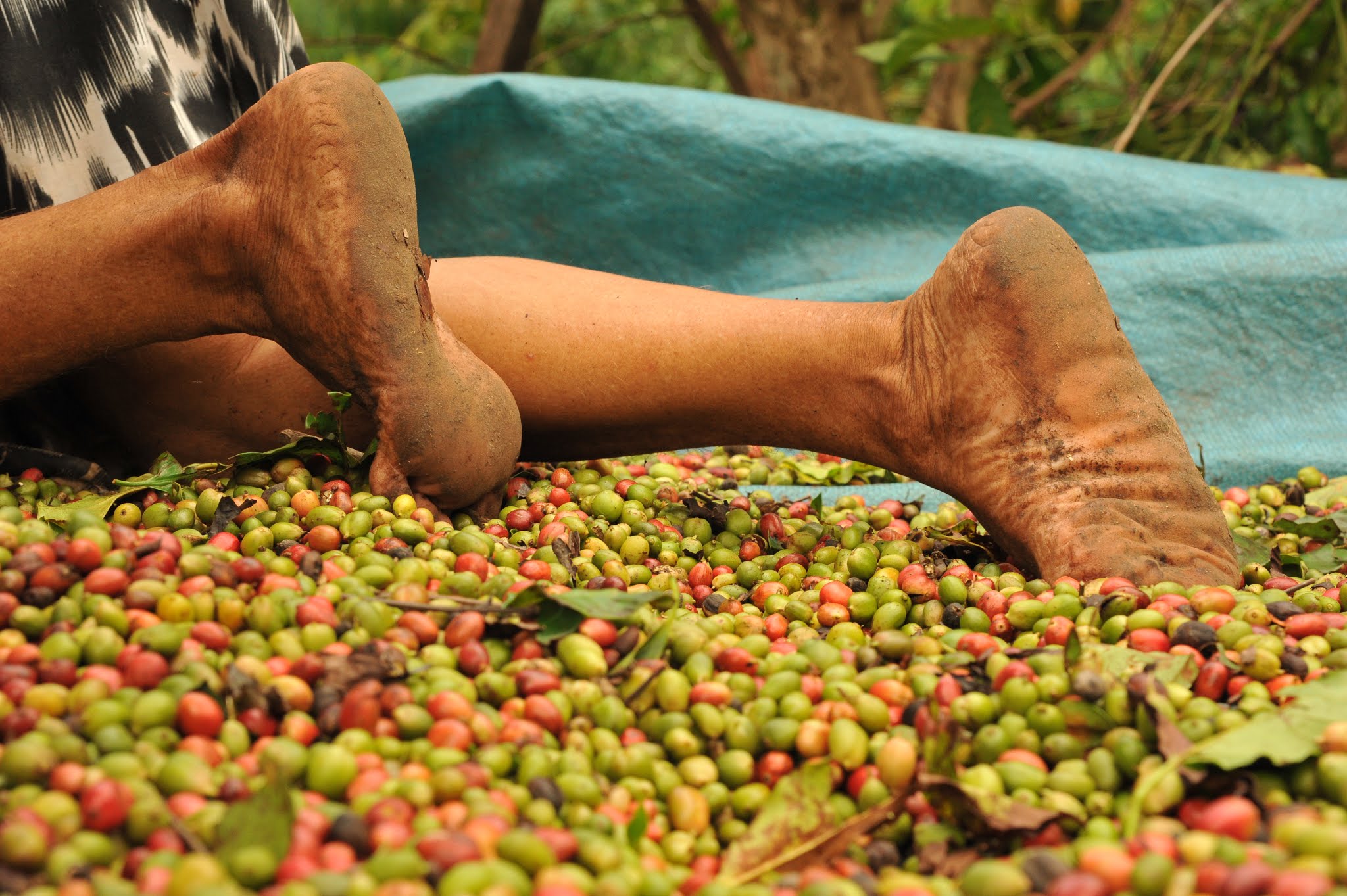Understand how extreme heat waves are related to environmental racism
 A man refreshes himself on a fountain in downtown Porto Alegre, Brazil on December 15, 2023. - A heatwave has hit Rio Grande do Sul, and the temperature could reach 43 ºC. This wave, which began on December 14, is expected to last until at least Sunday, close to the arrival of summer, which is on December 22. The National Institute of Meteorology has issued an orange heatwave alert covering the entire state, which is also a warning of the health risks posed by extreme temperatures. (Photo by SILVIO AVILA / AFP)
A man refreshes himself on a fountain in downtown Porto Alegre, Brazil on December 15, 2023. - A heatwave has hit Rio Grande do Sul, and the temperature could reach 43 ºC. This wave, which began on December 14, is expected to last until at least Sunday, close to the arrival of summer, which is on December 22. The National Institute of Meteorology has issued an orange heatwave alert covering the entire state, which is also a warning of the health risks posed by extreme temperatures. (Photo by SILVIO AVILA / AFP)
The extreme heat waves experienced in Brazil, the most recent from December 14 to 17, have raised temperatures to higher-than-expected maximums. This is the ninth time that this phenomenon has been recorded in the country this year alone, according to Inmet (National Institute of Meteorology). The institute issued an orange alert for the heat wave, which indicates danger. It is activated when temperatures are forecast to be 5ºC above average for three to five consecutive days. The forecast was for temperatures to exceed 40ºC in some regions.
According to a preliminary report published at the end of November by the WMO (World Meteorological Organization), an agency of the United Nations, 2023 was the hottest year since 1849. Until October, the global temperature was 1.4ºC above the 1950/1900 average, the result of high greenhouse gas emissions from polluting activities.
Although the sun is for everyone and temperatures rise without discrimination, the possibilities for protecting oneself against heat differ depending on social class, race and income. It is the most impoverished, generally black, indigenous and marginalized groups, who suffer most from climate change, despite being the people who are least responsible for the catastrophic effects it has been causing.
It is estimated that more than 1 billion people – the majority in the Global South – are at risk from extreme heat due to lack of access to air cooling equipment, according to UNEP (United Nations Environment Program). In Brazil, while 26.7% of white people have air conditioning at home, the proportion of black and brown people with access to this equipment is 12.6% and 15.3% respectively, according to the IBGE statistics institute.
This imbalance regarding who suffers most from the negative effects of ecological problems is called environmental racism. The concept was created in the 1980s by Benjamin Franklin Chavis Jr, a leader of the black civil rights movement in the United States, although traditional communities had already been working with this idea long before, although without using the same terminology.
The term features in a United Nations report on race and climate crisis. In 2021, under the government of Jair Bolsonaro, Brazil rejected the expression at a meeting of the UN Human Rights Council – but this obviously does not eliminate the relationship between racial and environmental injustice.
The situation has been getting worse. According to the WMO report, from 2011 to 2020, the number of countries facing record temperatures was higher than in any other decade. This has direct consequences for food security, displacements and migration.
“Socially vulnerable groups suffer more from environmental destruction. Deforestation, river contamination and lack of basic sanitation have a greater impact on black, indigenous and poor people,” said Julia Neiva, coordinator of the Defense of Socioenvironmental Rights program at Conectas.
According to the sociologist Maria Rita da Silva Passos, a member of the Brazilian Environmental Justice Network, there is a disproportionate burden of risk, damage and social and environmental impacts that fall on the most vulnerable ethnic groups.
Among people who do not have access to running water, more than half (66%) are black and brown and 70.2% of those who live without treated water are below the poverty line (with an income of less than R$417.45 per month). The data are from the Trata Brasil Institute.
The lack of water in the home, especially in the bathroom, and the lack of sewage collection affects the health of this population, who more frequently suffer from diarrhea and vomiting, which affects their work and schooling, reveals the institute.
“Public policies that do not accept the existence of environmental racism end up reproducing this racist logic. It is essential to prioritize investments in basic sanitation in marginal communities, not only to guarantee social rights, but also climate justice,” said Neiva.
High temperatures and risk of heavy rainfall
As the rainiest season of the year approaches, warnings are being raised about the risk of floods and landslides. These tragedies mostly affect people who live in poor quality housing – most of them black people.
According to the CNDH (National Council for Human Rights), although the tragedies during these periods of heavy rainfall are caused by climate change and by social and environmental degradation, they could be avoided or mitigated by actions by the public authorities. Inaction is yet another manifestation of environmental racism.
“They are mainly caused by the lack of infrastructure, planning and urban policies, which has been compounded by the economic crisis and the suspension of housing construction programs. This has resulted in an increase in the number of families living in high-risk areas across the country,” reads a statement from the council.
Global cooling
The climate emergency is leaving almost a third of the world’s population exposed to extreme heat waves that last more than 20 days.
And, without long-term structural changes, the immediate solution to combat the heat further fuels global warming: conventional cooling, by air conditioning, emits more than 7% of greenhouse gases worldwide. If the trend continues, this equipment will be responsible for consuming 20% of the world’s total electricity output and could double by 2050, according to the UN.
As a result, COP28 (Conference of the Parties), organized by the UN between late November and early December in Dubai, saw the launch of the Global Cooling Pledge. The conference is one of the events of the UNFCCC (Framework Convention on Climate Change) to debate the climate emergency in the world.
The objective is to draw up actions to achieve passive cooling, such as insulation, natural shading, ventilation and reflective surfaces, higher energy efficiency standards and reduction of refrigeration gases, or hydrofluorocarbons (that contain hydrogen, fluorine and carbon).
If the recommendations are followed, the UN says, it will be possible to reduce CO2 equivalent emissions estimated for 2050 by 3.8 billion tons – CO2 equivalent is a measure that compares the emissions of various greenhouse gases on the basis of their warming potential. As an example, methane has 21 times more warming potential than carbon dioxide, meaning its CO2 equivalent is 21.
Climate emergency and human rights
The right to a clean and healthy environment was incorporated into the list of human rights by the UN in 2022. The text of the resolution states that the climate emergency and environmental degradation are two of the most urgent threats to the future of humanity.
In the same year, the Supreme Court declared that the 2015 Paris Agreement – which lays out actions so the global average temperature does not rise more than 1.5ºC above pre-industrial levels – is a human rights treaty.
The ruling was given in the judgment of ADPF 708 (Allegation of Violation of a Fundamental Precept No. 708), on the Bolsonaro government’s failure to allocate resources to the Climate Fund, a case in which Conectas is an amicus curiae. As a result, the Court established that the Executive Branch has a constitutional duty to allocate resources for the climate with a view to protecting the environment.
“These resolutions may seem abstract, but they are a catalyst for action, and they empower ordinary people to hold their governments accountable in a way that is very powerful,” said David Boyd, the UN Special Rapporteur for Human Rights and the Environment, in a UN publication.


